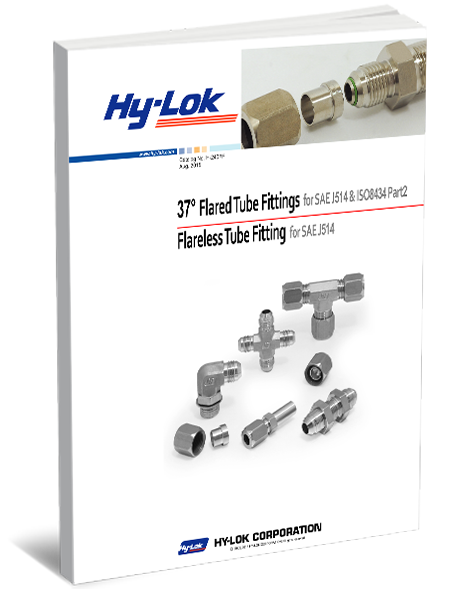High-pressure hydrogen fittings are used to ensure a tight seal on hydrogen gas and liquid, regardless of the temperature or environment in which it’s stored or used. However, if you’ve begun to notice issues with your fitting, it may be due for replacement.
Below, we’ll examine a few visual and audible signs that your fitting needs to be replaced. We’ll also discuss the benefits of Hy-Lok’s high-pressure fittings and why they’re the best option for your fluid system. Keep reading to learn more!
The Importance of High-Pressure Hydrogen Fittings
High-pressure fittings are used on hydrogen tanks, cylinders, and fluid control systems to prevent any gas or liquid from escaping while being transported, stored, or used. These features ensure the function and security of hydrogen tanks, pipes, valves, and other hydrogen storage and flow components.
High-pressure fittings are exposed to various conditions and will naturally wear out over time. Regular inspections can prevent issues such as gas leaks, fires, and combustion. If you know what to look out for, you’ll be able to catch signs of wear before they become a serious issue.
Below, we’ll cover a few different indicators of a worn-out or damaged high-pressure hydrogen fitting.
Signs of Wear and Damage
When performing quality and safety checks on your hydrogen containers, you should look for several indicators of damage. Some common signs include leakage, corrosion, fractures, and temperature conditions, all of which contribute to the wear of a sealant component.
Leakage
If hydrogen leaks from your container, your current fitting may be loose from damage or improper installation. If left unchecked, the high flammability of hydrogen gas and liquid may put you at risk for a fire or explosion.
If You Hear a “Hissing” Sound
A secondary indicator of leakage is a high-pitched ‘hissing’ sound escaping from the sealant area. If you can hear this noise, your sealant is either damaged or not properly secured.
Corrosion
A corroded or rusted fitting may result from hydrogen embrittlement, a chemical reaction that can occur when hydrogen is introduced and diffused into a material. The longer your fitting is exposed to this substance, the more corroded it may become over time, weakening its utility as a sealant.
Cracks or fractures
Cracks or fractures in your sealant can occur during the handling and/or transportation of your hydrogen container/system. After prolonged periods of use, the metal components on your fitting may become weaker and more susceptible to wear.
This level of surface damage can also be affected by the environment where your hydrogen container is being stored and/or transported. Extreme heat or cold temperatures may cause your sealant to crack, loosen, or erode.
Choose Quality with Hy-Lok’s High-Pressure Hydrogen Fittings
If you notice any of the above issues with your high-pressure hydrogen fitting, you should have it replaced immediately to prevent future potential hazards.
Our Hy-Lok high-pressure fittings are designed to weather the storm and are compatible with all fluid control systems in the hydrogen industry. If you need to replace your fitting, we’ve got you covered!
Our fittings are engineered with quality in mind. You’re guaranteed a durable, long-lasting product that is 100% interchangeable with other fluid system features and components. Finding replacement parts has never been easier!
For more information, visit the Products section of our website to view our extensive catalogue of fittings, valves, connectors, and other components.




